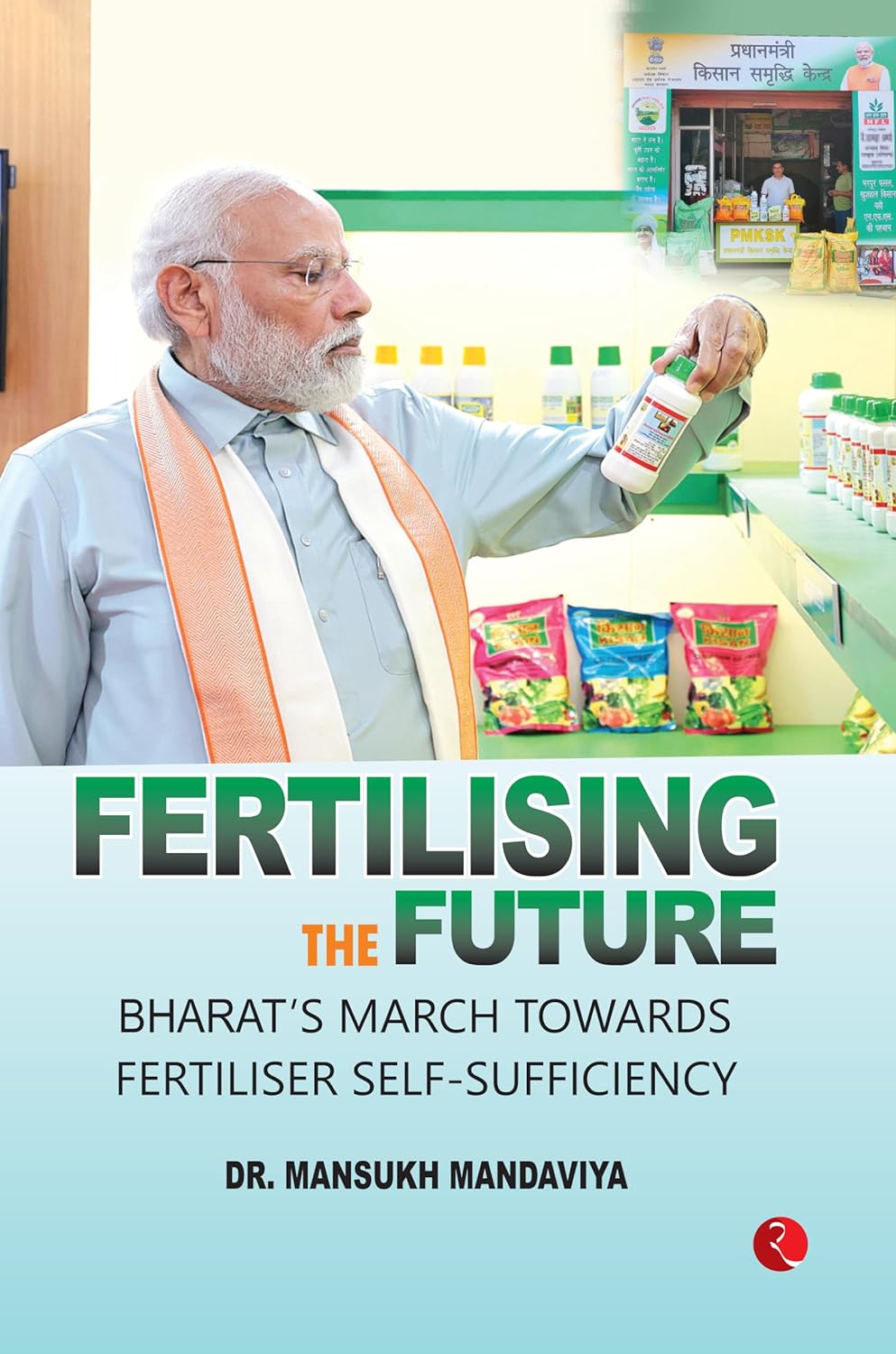Author: Mansukh Mandaviya
Publisher: Rupa Publications, India
Number of pages: 256
Price: Rs. 556 (Hardcover), Rs. 528.20 (Kindle)
ISBN:978-9361569746
‘Fertilising the Future’, a book authored by Dr. Mansukh Mandaviya, minister for chemicals and fertilisers and minister for health and family welfare, government of India, chronicles India’s journey towards fertiliser self-sufficiency.

It details the transformation from fertiliser shortage, black marketing and capacity constraints to a state of adequate supplies, farmer empowerment and technological innovations like neem-coatedurea, nano urea, and nano diammonium phosphate (DAP). The book underscores the fertiliser sector’s critical role in improving agricultural productivity, raising farm incomes, and ensuring food security for India’s population. It highlights the paradox of India being a major fertiliser producer yet a significant importer, which burdens the national exchequer substantially.
The minister discusses the government’s unwavering commitment to farmers’ welfare, particularly in shielding the agriculture sector from external shocks, such as the COVID-19 pandemic and the Ukraine war. Despite global price hikes, Indian farmers have received urea at highly subsidised rates. The book outlines initiatives, such as the Pradhan Mantri Kisan Samriddhi Kendra (PMKSK), aimed at providing the farmers with their requirements of fertilisers, seeds, pesticides and other services in one place. It also highlights the transformative ‘One Nation, One Fertiliser’ scheme, which has streamlined product offerings for farmers and resulted in significant savings in freight for the government. The book also details efforts to successfully restart production in major closed urea factories in Gorakhpur, Sindri, Barauni and Ramagundam and make India self-sufficient in urea by 2025.
The book also highlights the pioneering work of the Indian Farmers Fertiliser Cooperative Limited (IFFCO) in developing nano urea and nano DAP, marking a significant stride towards self-sufficiency and optimal use of fertilisers. It also unveils the use of drones to spray liquid fertilisers over a large area in a fraction of the time compared to that required by the traditional method – a game-changer for Indian farmers. Another area of innovation highlighted in the book is the sulphur-coated urea developed by Rashtriya Chemicals and Fertilisers (RCF). This breakthrough will address the sulphur deficiency in Indian soil while enhancing its urea absorption efficiency.
The book also touches upon the use of organo-mineral fertilisers, a blend of animal waste and mineral fertilisers, and alternative fertilisers derived from seaweed and waste from the fishing industry by the farmers. Recently, the Government of India approved IFFCO’s Nano-Urea Plus, an advanced nano urea formulation with a nitrogen content of 16% weight, marking a significant step towards promoting sustainable agriculture.
India is dependent on imports for phosphatic and potassic fertilisers. In 2022–23, India imported 2.3 million metric tonnes of phosphoric acid, 6 million metric tonnes of DAP and NPK (nitrogen, phosphorus, and potassium) fertilisers and 4.35 million metric tonnes of Muriate of Potash (MOP). The book outlines the proactive efforts made at the diplomatic and ministerial level with foreign governments and companies, resulting in long-term supply agreements by Indian companies with foreign supplier companies at reasonable prices and ensuring uninterrupted supply of phosphatic and potassic fertilisers. Efforts were also made to reduce the use of DAP by promoting alternative fertilisers, such as single superphosphate (SSP) and NPK.
The book investigates the efforts made under PM PRANAM (Prime Minister Programme for Restoration, Awareness, Nourishment, and Amelioration of Mother Earth) to increase the use of alternative fertilisers, such as organic fertilisers from agricultural and animal waste, nano fertilisers and bio fertilisers. The book also emphasises the balanced use of chemical fertilisers, highlighting the efforts made to move from the unbalanced NPK ratio of 7.7:3.1:1in 2021–22 to a balanced NPK ratio of 4:2:1.
The NPK ratio is a crucial factor in agriculture, indicating the proportion of nitrogen, phosphorus, and potassium in a fertiliser. Nitrogen stimulates the development of leaves and stems; phosphorus facilitates the growth of roots, flowers, and fruits; and potassium is essential for plant health and vigour. A 4:2:1 ratio is suitable for most soils; however, other factors like soil composition, plant species and growth stage should also be considered. Consultation with experts can help determine the best fertiliser or nutrient regimen. The Minister has highlighted that 22 crore soil health cards have been issued to farmers, enabling them to adopt balanced fertilisation –a step towards sustainable and responsible agricultural practices.
The authors’ narrative extends to government reforms and technology’s transformative impact on the fertiliser sector, including implementing Direct Benefit Transfer (DBT) and collaboration across various ministries to enhance the industry’s efficiency and self-reliance.
In conclusion, ‘Fertilising the Future’ is a highly informative and persuasive book that effectively highlights various initiatives of the Government of India in the fertiliser industry in the last decade. Dr. Mandaviya’s accessible writing style, comprehensive subject coverage and compelling examples make it a valuable resource for farmers, policymakers and anyone interested in sustainable agricultural practices. Given the current agricultural landscape, the book’s insights are particularly relevant and timely.
Reviewed by:
R. G. Rajan
Author & Columnist
Independent Director
Independent Consultant & Adviser
Distinguished Fellow, Institute of Directors
Former CMD, RCF/NFL/PDIL
Former Chairman FAI/SCOPE
































